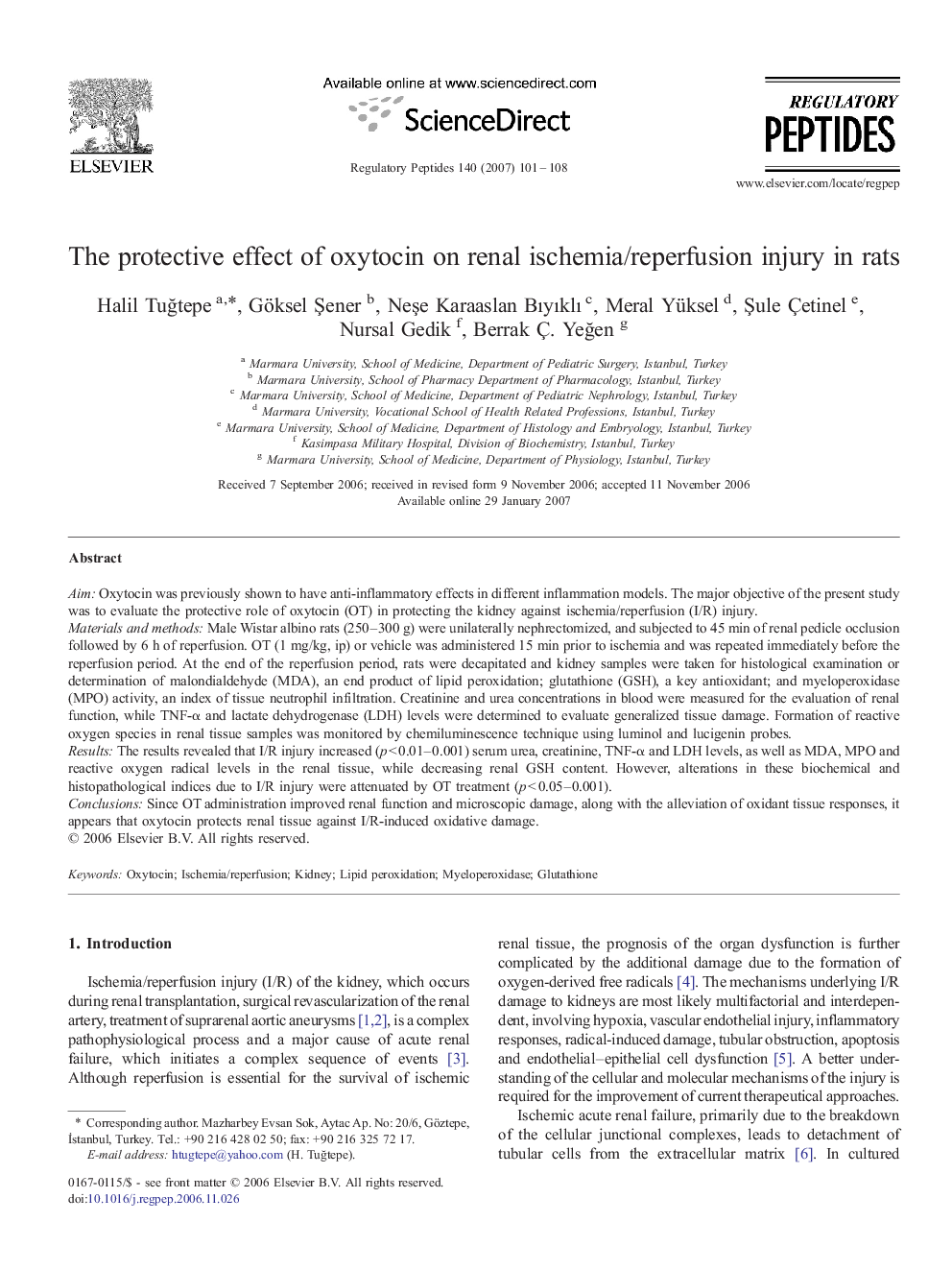| Article ID | Journal | Published Year | Pages | File Type |
|---|---|---|---|---|
| 2023270 | Regulatory Peptides | 2007 | 8 Pages |
AimOxytocin was previously shown to have anti-inflammatory effects in different inflammation models. The major objective of the present study was to evaluate the protective role of oxytocin (OT) in protecting the kidney against ischemia/reperfusion (I/R) injury.Materials and methodsMale Wistar albino rats (250–300 g) were unilaterally nephrectomized, and subjected to 45 min of renal pedicle occlusion followed by 6 h of reperfusion. OT (1 mg/kg, ip) or vehicle was administered 15 min prior to ischemia and was repeated immediately before the reperfusion period. At the end of the reperfusion period, rats were decapitated and kidney samples were taken for histological examination or determination of malondialdehyde (MDA), an end product of lipid peroxidation; glutathione (GSH), a key antioxidant; and myeloperoxidase (MPO) activity, an index of tissue neutrophil infiltration. Creatinine and urea concentrations in blood were measured for the evaluation of renal function, while TNF-α and lactate dehydrogenase (LDH) levels were determined to evaluate generalized tissue damage. Formation of reactive oxygen species in renal tissue samples was monitored by chemiluminescence technique using luminol and lucigenin probes.ResultsThe results revealed that I/R injury increased (p < 0.01–0.001) serum urea, creatinine, TNF-α and LDH levels, as well as MDA, MPO and reactive oxygen radical levels in the renal tissue, while decreasing renal GSH content. However, alterations in these biochemical and histopathological indices due to I/R injury were attenuated by OT treatment (p < 0.05–0.001).ConclusionsSince OT administration improved renal function and microscopic damage, along with the alleviation of oxidant tissue responses, it appears that oxytocin protects renal tissue against I/R-induced oxidative damage.
